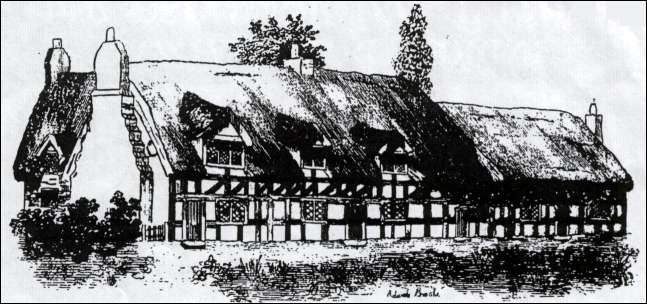Stoke-on-Trent Local History
![]() |
Estates Index |
|
Estates Index |
| Estates - ownership and development | |
|
Stoke-on-Trent Local History |
|
Ruston Grange
In the early 13th century the estate known as Rushton comprising 420 acres was the property of Henry de Audley.
In
1223 he included the estate among the endowments of the Cistercian abbey at
Hulton. The monks established a grange or sheep farm on the land which they held
until the dissolution of the monasteries by Henry VIII in 1538.
The Crown granted the estate to James Leveson of Wolverhampton in 1539 who sold
it in the following year to Richard Biddulph of Biddulph for £130 7s.
The Biddulph family were Roman Catholics and the Parliamentary Committee for the
County of Stafford sequestered the estate during the civil war.
| Their
order book for 1643-4 (SHC 1956) recorded:
“It is ordered that Mr Gabriel Keeling of Biddle shall hold from the Annunciation next for and during one whole yeare one Messuage or Tenement in Burslam called and knowne by the name of Rushton grange and the Colemines there beihg the land of Francis Biddulph Esq. a delinquent now sequestered with liberty to get and burne limestone to be spent upon the lands and 40 Tunne of limestone to dispose otherways as he shall please yielding and paying to our Treasurer the summe of £70 at foure payments viz. our lady day, Midsomer, Michaelmas, and Christmas: And likewise paying and discharging the weekly pay during the said due for the premises, and allowing to the widow Bagnold house room in the said grange and keeping of as many cowes in the said grounds as she had last yeare, she not misdemeaning her selfe against the said Gabriel Keeling.”
|
The Bagnalls:
The Bagnalls another Roman Catholic family were tenants of Francis Biddulph.
Part of the farmhouse was used as a place of worship by the Roman Catholics in the area. Their tenant, John Bagnall was forced to flee the house during the disturbances associated with the flight of James II in 1688 and the property was ransacked by a mob from Burslem and the neighbourhood.
John Bagnall described himself as a potter in his will made in the same year and Josiah Wedwood’s list of master potters in Burslem records that the Bagnall family “of Grange" were making butter pots with a weekly production to the value of £2 in 1710-15.

The farmhouse at Rushton Grange in about 1800
from Ward's "The Borough of Stoke-upon-Trent" 1843
In the second half of the 17th and the 18th century the Biddulph family sold the land on the east side of Rushton Grange and by the early 1840s the estate had been reduced to 220 acres.
Most of the land was let to William Gething who was recorded in the 1851 census returns as the occupier of 103 acres on which he employed 4 agricultural labourers. By then the Grange farm had been divided into two with the other part occupied by William a farm bailiff, his wife and an agricultural labourer.
The
expansion of the pottery factories at Cobridge and the construction of new
houses after the building of Waterloo Road brought problems as well as
opportunities for the occupier of the Grange Farm.
One result was that more and more people used the footpaths which crossed the
estate between Cobridge Burslem and Wolstanton.
| The
Staffordshire Advertiser reported on 14 August 1847:
“Caution to Trespassers in WheatfieIds: William Meadows was charged with stealing and damaging a quantity of growing wheat, value 4 shillings at the Grange Farm, near Burslem, on Sunday afternoon. There is a footpath along the field, and the prisoner was observed to leave the path, and go about 4 yards into the wheat, which he plucked and trampled down. After hearing the evidence of Mr Gething, the occupant of the farm, and a bailiff, who fully proved the damage, the Magistrates considered the charge fully sustained, and ordered the payment of 4 shillings as the amount of damages, with a fine of 10 shillings and 9 shillings and 6 pence expenses, or to be imprisoned by default.”
|
questions / comments / contributions? email: Steve Birks
08/12/2001